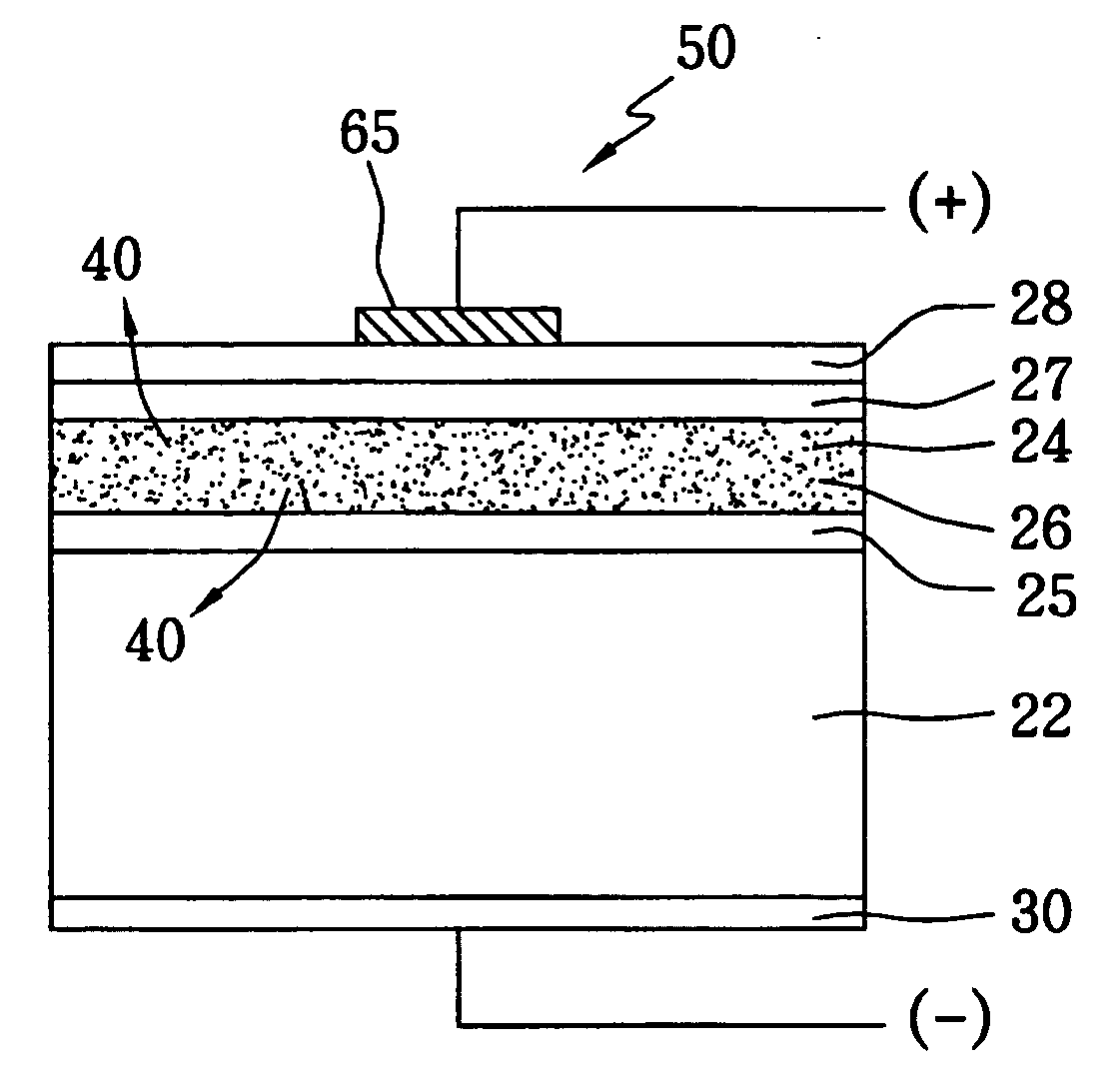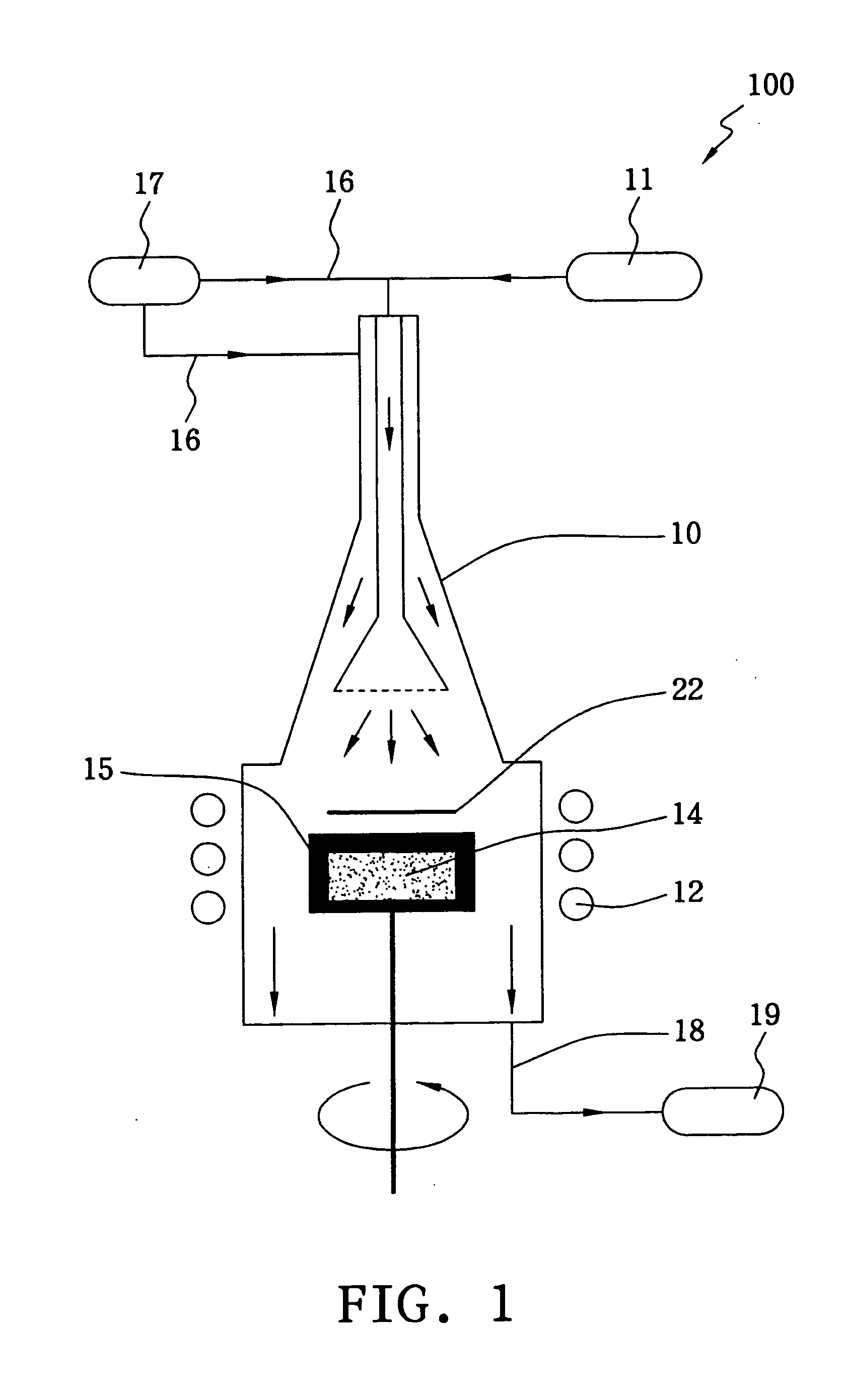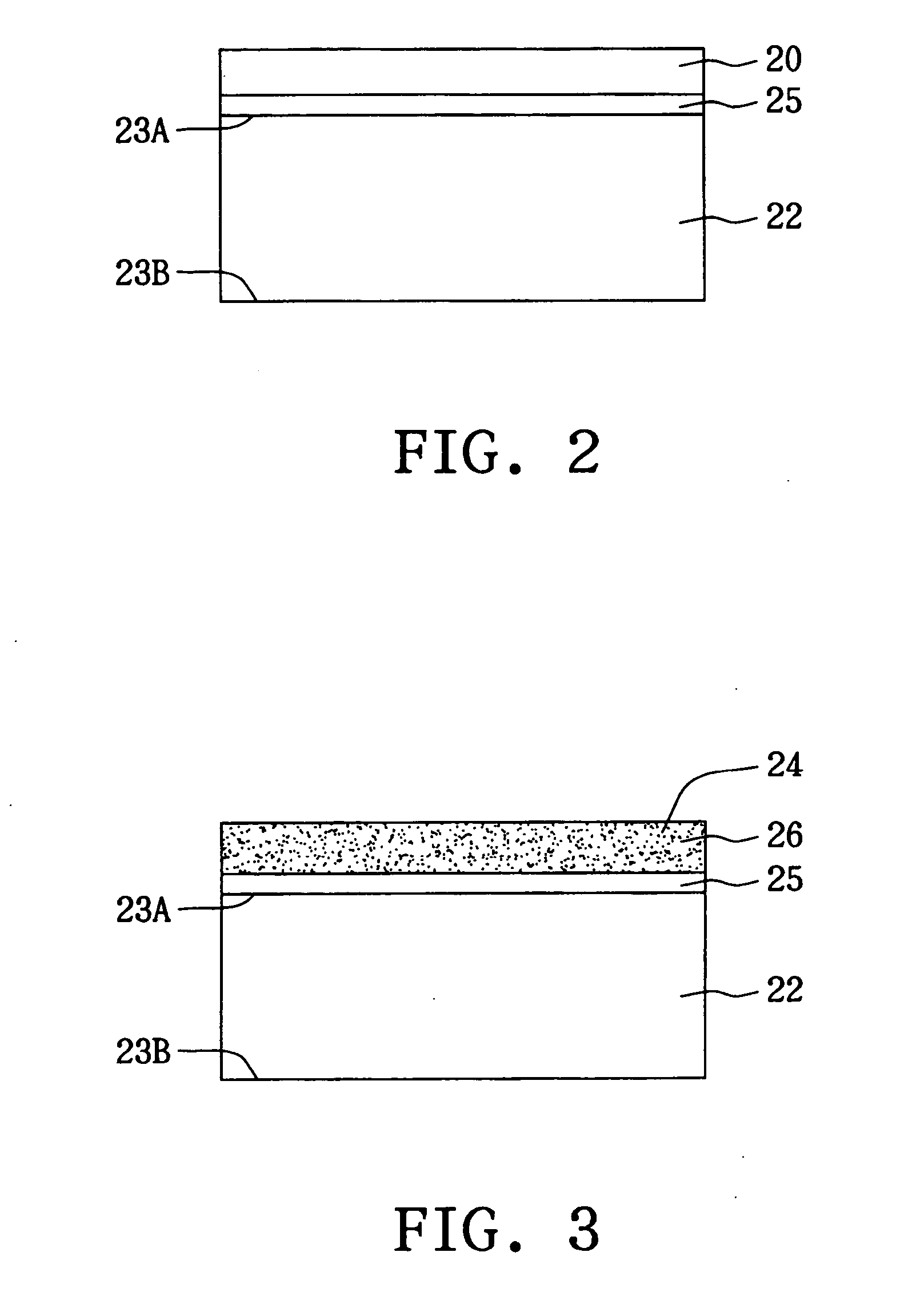Red light-emitting device and method for preparing the same
a technology of light-emitting devices and red light, which is applied in the direction of semiconductor devices, electrical devices, nanotechnology, etc., can solve the problems of inefficient light-emitting sources, commercial optoelectronic products, and porous silicon with some major defects in application
- Summary
- Abstract
- Description
- Claims
- Application Information
AI Technical Summary
Benefits of technology
Problems solved by technology
Method used
Image
Examples
Embodiment Construction
[0021] The quantum confinement effect broadens the band-gap of materials as the size of the material becomes smaller, and the nanocrystal has a distinct photoelectric property from the ordinary crystal with a larger size. Therefore, besides the well-known porous silicon, researchers also attempted to prepare the silicon-based light source by generating silicon nanocrystals (Si—NC) in a highly stable silicon dioxide layer.
[0022] The present method for preparing the Si—NC first forms a sub-stoichiometric silica (SiOx) layer with excess of silicon atoms by chemical vapor deposition (CVD), wherein the numerical ratio (x) of oxygen atoms to silicon atoms is smaller than 2. At least one high temperature annealing process is then carried out to respectively separate two different metallurgical phases (silicon and silicon dioxide), and to form the Si—NC with an order structure and the silicon dioxide with an amorphous structure simultaneously, wherein the silicon dioxide layer serves as a ...
PUM
 Login to View More
Login to View More Abstract
Description
Claims
Application Information
 Login to View More
Login to View More - R&D
- Intellectual Property
- Life Sciences
- Materials
- Tech Scout
- Unparalleled Data Quality
- Higher Quality Content
- 60% Fewer Hallucinations
Browse by: Latest US Patents, China's latest patents, Technical Efficacy Thesaurus, Application Domain, Technology Topic, Popular Technical Reports.
© 2025 PatSnap. All rights reserved.Legal|Privacy policy|Modern Slavery Act Transparency Statement|Sitemap|About US| Contact US: help@patsnap.com



